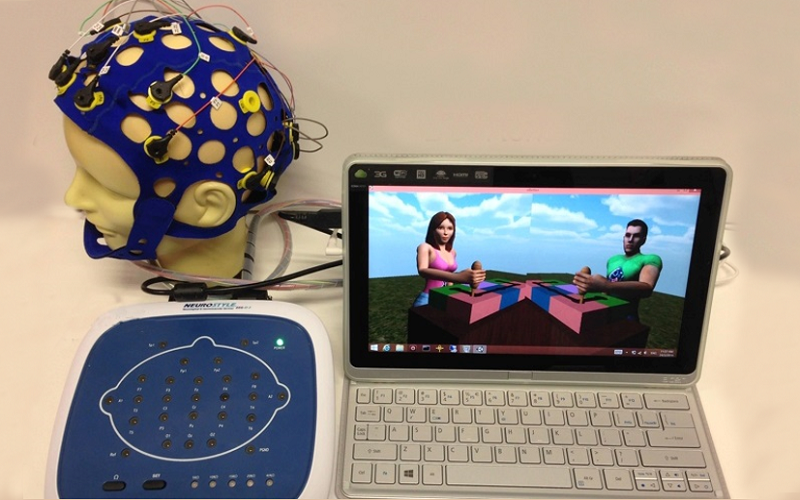Being able to move around freely is essential to having a sense of autonomy, but a stroke could snatch this ability from us in an instant. Therefore, for patients who have suffered a stroke, recovering motor function is a crucial component of therapy.
While the standard treatment for motor rehabilitation is conventional physiotherapy, statistics point to a clear need for more effective methods—nearly half of all stroke survivors remain disabled and consequently suffer from a poorer quality of life.
As an alternative approach to conventional physiotherapy for stroke patients, scientists at A*STAR’s Institute for Infocomm Research (I2R) have proposed using a combination of motor imagery and a brain-computer interface (BCI). Their research was carried out in collaboration with researchers at Nanyang Technological University, Singapore, and clinicians at Tan Tock Seng Hospital and the National University Hospital.
The non-invasive approach—named the Neurostyle Brain Exercise Therapy Towards Enhanced Recovery, or nBETTER for short—involves the use of electroencephalograms (EEGs) to monitor brain electrical activity. The EEG readouts allow the team to observe the patient’s mental practice of movement, or motor imagery. Brain signals from motor imagery are subsequently relayed by the BCI to move a virtual limb displayed on a computer screen, providing visual feedback to the patient.
“Stroke patients have difficulty performing physical movement of the impaired upper limb, but they can imagine moving the limb,” explained Kai Keng Ang, a Senior Scientist at I2R and an author on the study. Because this approach does not require actual movement from the patient, it bypasses stroke patients’ physical limitations at the start of rehabilitation.
Using the Fugl-Meyer Assessment as the standard for scoring motor function, the team conducted a small trial to compare the clinical efficacy of nBETTER with that of standard arm therapy (SAT). They found that patients who underwent nBETTER over a span of 24 weeks had an average improvement score of 5.8, compared to 3.6 for those who underwent SAT.
“Our findings suggest a role for BCI in detecting imagination of movement and providing visual feedback, perhaps by using virtual reality or augmented reality,” Ang noted. “This is how BCI can be used to complement existing rehabilitation practices.”
However, the researchers also observed mental fatigue in patients undergoing nBETTER, which could reduce rehabilitation efficacy. They suggest that the fatigue is caused by the monotony of the mental practice and the sustained attention required. “Going forward, we intend to use soft robotics to provide stroke patients with touch and motion feedback, in addition to visual feedback, during MI-BCI therapy,” Ang said.
The A*STAR-affiliated researchers contributing to this research are from the Institute for Infocomm Research (I2R).






